Ba8.9
Number 8 was the perfect number, announcing how one cycle would
always be followed by a new one - like a bicycle ride into infinity (∞),
with a small wheel in front and a bigger one following.
|
 |
2 |
 |
|
Beid (The Egg) |
AIN (The Eye) |
... Actually, we are dealing here with a
figure of speech because 'seven' and 'eight' used as qualifying
quantities play a traditional role in Oceania (Barthel 1962a).
While the number seven is known as a topos in MQS., HAW., and
MAO., the topos of the number eight goes far beyond eastern
Polynesia (MQS., HAW., TAH.). In TON., the number eight is 'a
conventional term signifying many or a well-balanced number'
(McKern 1929:17), and on Malaita in the southern Solomon
Islands, the physical world in its entirety is referred to as
'eight islands (wālu malau) (Ivens 1927:400). The number
eight not only means 'many' but also denotes perfection. Thus,
when Easter Island was called 'an eighth land', the expression
contained first of all the idea of a 'last' island - an island
farthest away from the rest of the islands that make up the
oceanic world. At the same time, the expression indicated a
special position among the other islands. The idea of groups of
seven, which are surpassed by an eight element, seems to belong
to the cosmology of Asian high cultures. For example, there are
seven planets circling the world axis, which represents the
eighth, and therefore central, position ...

Glyph line Ba8 was probably beginning when the Full Moon reached the
Long Sand-bank,
where Raven (Corvus) would stroll along and find a giant clam shell (kea)
packed with men. This was at glyph number 295 (→
10 lunar synodic months).

... There, half buried in the sand was a
giant clamshell. As his shadow fell upon it, he heard another
muffled squeak. Peering down into the opening between the halves
of the shell, he saw it was full of tiny creatures, cowering in
fear at his shadow. Raven was
delighted. Here was a break in the monotony of the day
...
Then, in the next day the Full Moon was destined to reach the
Southern Cross, the great hour-glass
of
the night. In time-space life was always followed by death.

... How often have we heard our guides exclaim in the savannahs
of Venezuela and in the desert extending from Lima to Truxillo,
'Midnight is past, the Cross begins to bend' ...
 |
 |
 |
 |
 |
 |
 |
|
Kua oho ki te nuku honu |
mai tae
huri ïa |
ki te motomotou honu
|
kua tuu ki te hau tea |
e vaha te manu ariga hiti |
kua vero ko te
tai |
mai tae noho ki te hau tea |
|
Huri. 1. To turn
(vt.), to overthrow, to knock down:
huri moai, the overthrowing of the statues from
their ahus during the period of decadence on
the island. 2. To pour a liquid from a
container: ka huri mai te vai, pour me some
water. 3. To end a lament, a mourning: he
huri i te tagi, ina ekó tagi hakaou, with this
the mourning (for the deceased) is over, there shall
be no more crying. 4. New shoot of banana:
huri maîka. Vanaga. 1. Stem. P Mgv.: huri,
a banana shoot. Mq.: hui, shoot, scion. 2. To
turn over, to be turned over onto another side, to
bend, to lean, to warp; huri ke, to change,
to decant; tae huri ke, invariable; huri
ke tahaga no mai, to change as the wind; tae
huri, immovable; e ko huri ke,
infallible; huhuri, rolling; hakahuri,
to turn over; hakahuri ke, to divine. P Pau.:
huri, to turn. Mgv.: huri, uri,
to turn on one side, to roll, to turn upside down,
to reverse. Mq.: hui, to turn, to reverse. 3.
To throw, to shoot. 4. To water, to wet. 5. To
hollow out. Hurihuri: 1. Wrath, anger;
kokoma hurihuri, animosity, spite, wrath, fury,
hate, enmity, irritable, quick tempered, to feel
offended, to resent, to pester; kokoma hurihuri
ke, to be in a rage. 2. (huri 4)
hurihuri titi, to fill up. 3. To polish. 4. (uriuri).
Hurikea, to transfigure, to transform.
Churchill. Mq. huri, resemblance. Sa.:
foliga, to resemble. Churchill.
Tai.
1. Ocean, sea (often used without an
article); he-turu au ki tai hopu, I am going
down to the sea to bathe. 2. To be calm, good for
fishing: he tai. There exists a surprisingly
developed terminology for distinguishing the phases
of the tides: tai pâpaku, low tide;
ku-gúgú-á te tai, tide at his lowest, literally
'the sea has dried up'; he-ranu te tai, when
the water starts rising again; this is a strange
expression, since ranu means 'amniotic
liquid,' the breaking of the waters which precedes
birth; in this phase of the tides the fish start
coming out of their hiding places and swim to the
coast in search of food; tai hahati, rising
tide; tai hini hahati, tide as it continues
rising; tai u'a, tai u'a parera, when the
tide has reached its high; tai hini u'a, tide
all throughout its full phase; tai hori, tide
as it starts receding; tai ma'u, tide during
its decreasing phase, right until it becomes tai
pâpaku again; tai raurau a riki, the
slight swell, or effervescence of the sea at a
change of the moon. 3. Good spot for raising
chickens; the stone chicken coops called hare
moa, were built in places 'tai moa'.
Ahé te tai o taau moa? whereabouts are the
raising grounds of your chickens? 4. Song in
general; song executed by a group of singers;
ku-garo-ana i a au te kupu o te tai, I have
forgotten the words of the song. Taitai,
tasteless; said especially of sweet potatoes and
other produces of the soil which do not taste good
for being too watery; kumara taitai, watery,
tasteless sweet potato. Vanaga. 1. Salt water;
taitai, brackish, salty. P Mgv., Mq., Ta.:
tai, salt water. Mq.: taitai, to salt.
Ta.: taitai, salty. 2. Sea, ocean; tai
hati, breakers; tai hohonu, depths of the
sea; tai kaukau, tide; tai negonego,
tide; tai o, ripple; tai parera, tide;
tai poko, breakers; tai titi, tide;
tai ua, tide, ebb; tai vanaga, ripple. P
Mgv., Mq., Ta.: tai, sea, ocean. 3. Ta.:
tai-ao, dawn. Mq.: takitaki te ao, just
before dawn. Churchill. |
|
Ba8-1 (295) |
Ba8-2 |
Ba8-3 |
Ba8-4 → 3-25 |
Ba8-5 |
Ba8-6 (300) |
Ba8-7 |
|
VISIBLE CLOSE TO
THE FULL MOON: |
|
CHANG SHA (Long Sand-bank) = ζ Corvi
(186.3) |
INTROMETIDA (Inserted) =
ε
Crucis (187.4),
ACRUX =
α
Crucis
(187.5)
*146.0 = *187.4 - *41.4 |
γ Com. Berenicis (188.0), σ Centauri (188.1),
ALGORAB = δ Corvi
(188.5),
GACRUX = γ Crucis
(188.7) |
γ
Muscae (189.0),
AVIS SATYRA (Bird of the Satyrs) =
η
Corvi
(189.3),
ASTERION (Starry) =
β
Canum Ven.
(189.5),
KRAZ = β Corvi,
κ Draconis (189.7) |
α Muscae (190.2), τ Centauri (190.5), χ Virginis
(190.7)
ALDERAMIN (α Cephei) |
Al Áwwā'-11 (The Barker) /
Shur-mahrū-shirū-18 (Front or
West Shur)
SOMBRERO GALAXY = M104 Virginis
(191.1),
ρ
Virginis (191.4),
PORRIMA =
γ
Virginis,
γ
Centauri (191.5)
*150.0 = *191.4 - *41.4 |
ι Crucis (192.2), β Muscae (192.5),
MIMOSA
= β Crucis
(192.9) |
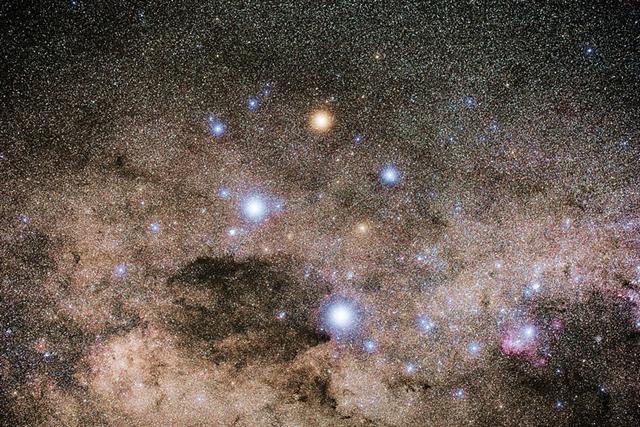 |
|
JULY 21 |
22 / 7 → π
|
23 |
24 |
25 (88 + 118) |
26 (191 + 16) |
27 (208) |
|
5 |
|
INVISIBLY CLOSE
TO THE SUN: |
|
No star listed
(4) |
ANKAA = α Phoenicis,
κ
Phoenicis (5.0)
ALPHARD (α Hydrae) |
λ Phoenicis (6.3),
β
Tucanae (6.4)
*6.4 - *41.4 =
*147.0 - 182.0 = - *35.0 |
ANDROMEDA GALAXY (M31),
π Andromedae (7.7) |
ε
Andromedae (8.2),
DELTA =
δ Andromedae (8.4),
SCHEDIR (Breast) = α Cassiopeiae
(8.6),
ζ
Andromedae,
μ
Phoenicis (8.9)
*8.4 - *41.4 = *149.0 - 182.0 = - *33.0 |
ξ
Phoenicis (9.0),
ρ
Tucanae (9.1),
DENEB KAITOS (Tail of the Sea Beast) =
β
Ceti,
η
Phoenicis (9.4), AL NITHĀM (String of Pearls) =
φ¹
Ceti
(9.6)
*9.4 - *41.4 = *150.0 - 182.0 = - *32.0 |
ACHIRD (Woman with Luminous Rays) =
η
Cassiopeiae
(10.7) |
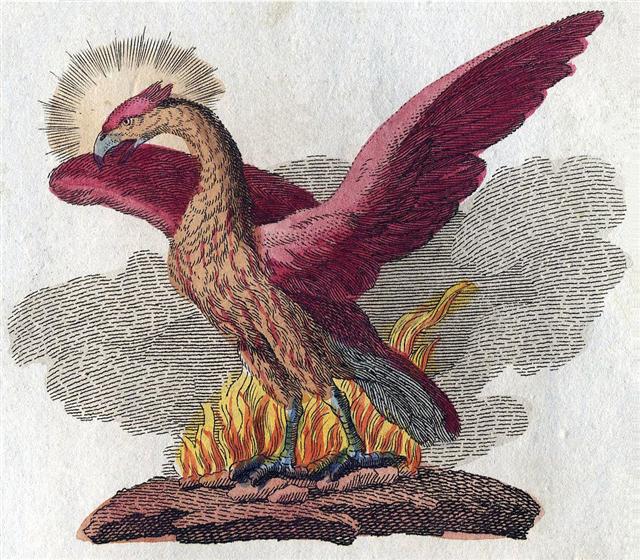 |
|
Julian equinox |
March 26 (85) |
27 (451) |
28 |
29 (88) |
30 |
31 (208 - 118) |
The precession had pushed the Raven constellation ahead in the
Sun year, making it possible to yoke about his late appearance:
... the bird, being sent with a cup for
water, loitered at a fig-tree till the fruit became ripe, and
then returned to the god with a water-snake in his claws and a
lie in his mouth, alleging the snake to have been the cause of
the delay. In punishment he was forever fixed in the sky with
the Cup and the Snake; and, we may infer, doomed to everlasting
thirst by the guardianship of the Hydra over the Cup and its
contents. From all this came other poetical names for our Corvus
- Avis Ficarius, the Fig Bird; and Emansor, one
who stays beyond his time; and a belief, in early folk-lore,
that this alone among birds did not carry water to its young
...
Once upon a time ζ Corvi had risen with the Sun in day 186 (July
5), but nowadays he rose with the Sun in right ascension day 186
(September 23 = the day after the equinox).
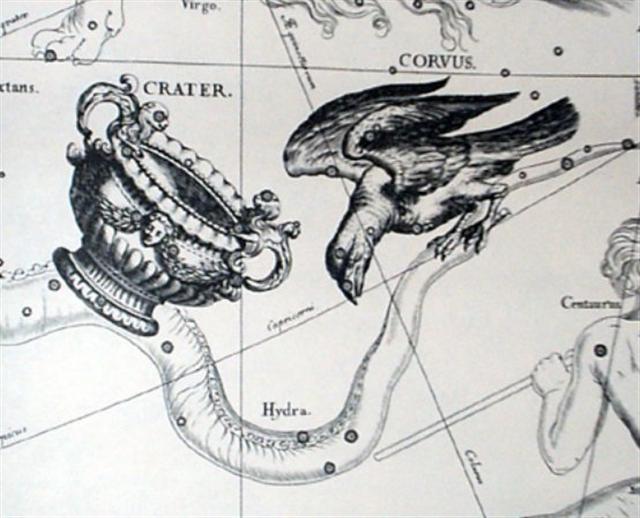
Which implied also
mankind had to come 80 days too late - just after the Sun had gone down at the
horizon in the west, making it necessary to light kitchen fires
(ahi) - something the rest of the world of created beings
were unable to do. Man was special, he had robbed the fire from the
sky.

... All was now ready for departure except
that there was no fire in the smithy. The ancestor slipped into
the workshop of the great Nummo, who are Heaven's smiths, and
stole a piece of the sun in the form of live embers and
white-hot iron. He seized it by means of a 'robber's stick' the
crook of which ended in a slit, open like a mouth. He dropped
some of the embers, came back to pick them up, and fled towards
the granary; but his agitation was such that he could no longer
find the entrances. He made the round of it several times before
he found the steps and climbed onto the flat roof, where he hid
the stolen goods in one of the skins of the bellows, exclaiming:
'Gouyo!', which is to say. 'Stolen!'. The word is still
part of the language, and means 'granary'. It is a reminder that
without the fire of the smithy and the iron of hoes there would
be no crops to store ...

Ahi. Fire; he-tutu i te ahi to light a fire.
Ahiahi = evening; ahiahi-ata, the last moments of
light before nightfall. I te ahiahi-ata he garo te raá ki
raro ki te vai kava. In the evening the sun disappears under
the sea. Ku-tea-á te hetu'u ahiahi, the evening star has
risen. Vanaga. 1. Candle, stove, fire (vahi); ahi
hakapura, match; ahi hakagaiei, firebrand waved as a
night signal. P Mgv.: ahi, fire, flame. Mq.: ahi,
fire, match, percussion cap. Ta.: ahi, fire, percussion
cap, wick, stove. 2. To be night; agatahi ahi atu, day
before yesterday. 3. Pau.: ahi, sandalwood. Ta.: ahi,
id. Mq.: auahi, a variety of breadfruit. Sa.: asi,
sandalwood. Ha.: ili-ahi, id. Ahiahi, afternoon,
night; kai ahiahi, supper. P Pau., Mgv., Mq., Ta.:
ahiahi, afternoon, evening. Ahipipi (ahi 1 -
pipi 2) a spark, to flash. Churchill.
He had been able to do so for next to the Sun the Old Spider had placed the Earth (the domain
of Man).
... Constantly hunting about she at last
found a snail. To endow it with power she placed it under her
arm, lay down and slept for three days. Then she let it free,
and still hunting about she found another snail bigger than the
first one, and treated it in the same way. Then she said to the
first snail: 'Can you open this room a little, so that we can
sit down?' The snail said it could, and opened the shell a
little. Old-Spider then took the snail, placed it in the west of
the shell, and made it into the moon. Then there was a little
light, which allowed Old-Spider to see a big worm. At her
request he opened the shell a little wider, and from the body of
the worm flowed a salted sweat which collected in the lower
half-shell and became the sea. Then he raised
the upper half-shell very high, and it became the sky. Rigi,
the worm, exhausted by this great effort, then died. Old-Spider
then made the sun from the second snail, and placed it beside
the lower half-shell, which became the earth ...
... The shellfish in question might well
have been represented in Ba8-9, where Metoro mentioned
kea. And when the Old Spider slept for 3 days it could,
according to the B text, have corresponded to the first 3
days of April. 8 * 11 (Ba8-11)
→ Ba8-8 ...
 |
 |
 |
 |
 |
 |
 |
|
Ba8-8 → 64 |
(58 + 245) |
Ba8-10 |
Ba8-11 → 88 |
(58 + 248) |
Ba8-13 |
Ba8-14 (308) |
|
ki te henua |
ka kau ko te
kea i te henua |
koia ra kua hanau |
i te ariki |
e tarahoi |
no te nuku |
|
Kau. 1. To move one's feet
(walking or swimming); ana oho koe, ana kau i te
va'e, ka rava a me'e mo kai, if you go and move
your feet, you'll get something to eat; kakau
(or also kaukau), move yourself swimming. 2.
To spread (of plants): ku-kau-áte kumara, the
sweet potatoes have spread, have grown a lot. 3. To
swarm, to mill around (of people): ku-kau-á te
gagata i mu'a i tou hare, there's a crowd of
people milling about in front of your house. 4. To
flood (of water after the rain): ku-kau-á te vai
haho, the water has flooded out (of a container
such as a taheta). 5. To increase, to
multiply: ku-kau-á te moa, the chickens have
multiplied. 6. Wide, large: Rano Kau, 'Wide
Crater' (name of the volcano in the southwest corner
of the island). 7. Expression of admiration:
kau-ké-ké! how big! hare kau-kéké! what a
big house! tagata hakari kau-kéké! what a
stout man! Vanaga. To bathe, to swim; hakakau,
to make to swim. P Pau., Mgv., Mq.: kau, to
swim. Ta.: áu, id. Kauhaga, swimming.
Churchill. The stem kau
does not appear independently in any language of
Polynesian proper. For tree and for timber we have
the composite lakau
in various stages of transformation. But kau
will also be found as an
initial component of various tree names. It is in
Viti that we first find it in free existence. In
Melanesia this form is rare. It occurs as kau
in Efaté, Sesake, Epi, Nguna, and perhaps may be
preserved in Aneityum; as gau in Marina; as
au in Motu and somewhere in the Solomon
islands. The triplicity of the Efaté forms [kasu,
kas, kau] suggests a possible
transition. Kasu and kas are easy to
be correlated, kasu and kau less easy.
They might be linked by the assumption of a parent
form kahu, from which each might derive. This
would appear in modern Samoan as kau; but I
have found it the rule that even the mildest
aspirate in Proto-Samoan becoming extinct in modern
Samoan is yet retained as aspiration in Nuclear
Polynesia and as th in Viti, none of which
mutations is found on this record. Churchill 2.
Kea. Mgv.: kea, a
fish. Mq.: kea, id. Ha.: ea, id.
Churchill. Ta.: ea, the thrush, aphthæ. Mq.:
kea, id. Sa.: 'ea'ea, id. Ha.: ea,
id. Churchill. According to Barthel kea was
explained as 'macrouse' by Bishop Jaussen.
Hanau. 1. Race, ethnic group.
Hanau eepe, the thick-set race; hanau
momoko, the slender race (these terms were
mistranslated as 'long-ears' and 'short-ears'). 2.
To be born. Hanau tama, pregnant woman;
vî'e hanau poki, midwive (also: vî'e hakaa'u).
Vanaga. To be born; vie hanau, midwife. P
Pau.: fanauga, child, descendant, progeny.
Mgv.: hanau, to be born, to be brought into
the world. Mq.: fanau, hanau, to be
born, to lie in, to bring into the world. Ta.:
fanau, to be born, to lie in. Churchill.
Nuku. 1. Pau.: nuka, crowd,
throng. Ta.: nuú, army, fleet. Mg.: nuku,
a host, army. 2. Mgv.: nuku, land, country,
place. Sa.: nu'u, district, territory,
island. Churchill. |
|
VISIBLE CLOSE TO
THE FULL MOON: |
|
No star listed (193) |
κ
Crucis (194.4),
ψ
Virginis (194.5),
μ
Crucis,
λ
Crucis (194.6),
ALIOTH (Fat Tail) =
ε
Ursae Majoris,
ι
Oct.
(194.8)
*153.0 = *194.4 - *41.4 |
MINELAUVA = δ Virginis
(195.1),
COR CAROLI =
α
Canum Ven.
(195.3) |
δ
Muscae (196.5) ,
VINDEMIATRIX (Grape Gatherer) =
ε
Virginis
(196.8) |
13h
(197.8)
ξ¹ Centauri (197.1), ξ² Centauri (197.9) |
APAMI-ATSA (Child of Waters) = θ Virginis,
ψ
Hydrae (198.5),
DIADEM =
α
Com. Ber.
(198.9) |
AL DAFĪRAH (Tuft) =
β
Com. Ber.
(199.4)
*158.0 = *199.4 - *41.4 |
 |
|
JULY 28 |
29 (210) |
30 |
31 (196 + 16) |
AUG 1 |
2 (214) |
3 |
|
INVISIBLY CLOSE
TO THE SUN: |
|
April 1 (91) |
2 (210 - 118) |
3 |
4 (355 - 261) |
5 |
6 |
7 |
|
Legs-15 (Wolf)
ν
Andromedae (11.0),
φ²
Ceti (11.1),
ρ Phoenicis (11.2),
η
Andromedae (11.4)
*335.0 = *11.4 - *41.4
|
CIH
(Whip) = γ Cassiopeiae,
λ Tucanae (12.4),
φ³ Ceti (12.6), μ Andromedae (12.8)
*336.0 = *12.4 - *41.4 |
φ4 Ceti (13.2) |
No star listed (14) |
1h
(15.2)
β Phoenicis (15.1), υ Phoenicis, ι Tucanae (15.6), η
Ceti, ζ Phoenicis (15.7) |
Al Batn Al Hūt-26 (Belly of the Fish) /
Revati-28 (Prosperous) /
1-iku (Field Measure)
MIRACH (Girdle) =
β
Andromedae,
KEUN MAN MUN (Camp's South Gate) =
φ
Andromedae
(16.0),
ANUNITUM =
τ
Piscium
(16.5),
REVATI (Abundant) =
ζ
Piscium
(16.9)
REGULUS
(α Leonis |
ν
Phoenicis (17.4), κ Tucanae (17.6) |
 |
|
... At the beginning of 44 B.C. - when Ceasar was
still alive - the Senate decided to raise statues of
him in all the temples and to sacrifice to him on
his birthday in the month Quintilis, which in
honour of him was renamed July. He was raised to the
status of a god (among the other gods of the state)
under the name Jupiter Julius. Marcus Antonius, who
this year was consul together with Caesar, became
high priest and responsible for the ceremonies. In
the middle of February, at the time of the old feast
of Lupercalia [Lupus = Wolf], he ran
around naked and whipped the Roman ladies with
thongs made from goat-skin [februa], in order
to promote their fertility ... |
Anciently they had waited for the reappearance of the relevant
stars after their close encounters with the Sun. This meant we
should add 16 right ascension days to April 1 (91). 91 + 16 =
107 (April 17) = 80 + 27. Ba8-8 + 16 = Ba8-24.
Half way through this 'yoke' period was Rogo and the thong
holding it all together.
 |
 |
 |
 |
 |
 |
 |
|
Ba8-15 |
Ba8-16 |
Ba8-17 |
Ba8-18 |
Ba8-19 |
Ba8-20 (314) |
Ba8-21 |
|
koia ra kua mau - i te tao hia |
eko te tao hia |
kua maa |
ku Maori |
i te hagahaga i te mago |
mai tae haga hia tona
maa |
kua rere koia |
|
Ai-ka-piri ta'a me'e ma'a,
expression used to someone from whom one hopes to
receive some news, like saying 'let's hear what news
you bring'. Hare rutu rogorogo mo hakama'a ki te
ga poki ite kai, i te rogorogo, rongorongo
school, house in which children were taught reading
and writing the rongorongo signs.
|
 |
 |
|
Rogo |
April 10 |
Rogo. Rogorogo:
Originally, 'orators, bards' of
Mangareva. Borrowed into the Rapanui
language in 1871, it came to generically
signify the wooden tablets incised with
glyphs, the writing system itself, and
the respective inscriptions. Earlier the
term ta was used for the
writings. Fischer. Mgv.: rogouru,
ten. Mq.: onohuu, okohuu,
id. Churchill.
... I feel rather
convinced that the Rogo
figure has been correctly located to
day 100 (April 10). His neck is
short, which suggests the view from
Easter Island (south of the
equator), where April corresponded
to the autumn month of October in
the north ...
|
|
VISIBLE CLOSE TO
THE FULL MOON: |
|
σ
Virginis (200.4)
*159.0 = *200.4 - *41.4 |
γ
Hydrae (201.0),
ι
Centauri (201.4)
*160.0 = *201.4 - *41.4 |
Al Simāk-12 (Lofty) /
Chitra-14 (Bright One) /
Horn-1 (Crocodile) /
Sa-Sha-Shirū-20
(Virgin's Girdle)
/
ANA-ROTO-3 (Middle pillar)
MIZAR =
ζ
Ursae Majoris (202.4),
SPICA =
α
Virginis,
ALCOR = 80 Ursae Majoris
(202.7)
SADALMELIK (α
Aquarii)
*161.0 = *202.4 - *41.4 |
71 VIRGINIS
(203.6) |
No star listed (204) |
HEZE =
ζ
Virginis
(205.0),
SOUTHERN PINWHEEL GALAXY = M83 Hydrae
(205.7) |
ε Centauri (206.3),
κ Oct.
(206.4)
*165.0 = *206.4 - *41.4 |

... Proclus informs us that the fox star nibbles
continuously at the thong of the yoke which holds
together heaven and earth; German folklore adds that
when the fox succeeds, the world will come to its
end. This fox star is no other than Alcor,
the small star g near zeta Ursae Majoris (in India
Arundati, the common wife of the Seven
Rishis, alpha-eta Ursae ... |
|
AUG 4 |
5 |
6 (218 = 225 - 7) |
7 |
8 |
9 |
10 (222) |
|
INVISIBLY CLOSE TO THE SUN: |
|
FEBR 3 |
4 |
5 (36) |
6 |
7 |
8 (39) |
9 (222 - 182) |
|
April 8 |
9 |
10 (100) |
11 (466) |
4-12 → 48 |
→ 14 * 29½ |
→ 414 |
|
No star listed (18) |
ADHIL (Garment's Train) = ξ Andromedae
(19.3),
θ
Ceti (19.7) |
KSORA (Knee) =
δ
Cassiopeiae
(20.1),
ω
Andromedae (20.6),
γ
Phoenicis (20.8) |
δ Phoenicis (21.5) |
υ Andromedae (22.9) |
ACHERNAR (End of the River) =
α
Eridani
(23.3),
χ
Andromedae (23.6),
τ
Andromedae (23.9)
|
ALSEIPH (Scimitar) =
φ
Persei
(24.5),
τ
Ceti (24.7 |
Furthermore, this
was a week prior to when the Full Moon would reach AUGUST 13
(225), reminding people of how nowadays the position here
(after the tip of the tail of the Great Bear) was when the
Sun would reach the First Point of Aries. 225 + 64 - 182 =
107 (April 17) = 80 + 27:
... In time-space (Pacha)
everything was present simultaneously, for this was
necessary when telling about the structure as a whole
...
 |
 |
 |
|
Ba8-22 (316) |
Ba8-23 |
Ba8-24 |
|
e tagata rere hura era ki te
huraga - o to pure |
kua oho to vae |
ki te tagata oho i
mua |
|
Va'e: Foot, leg; te va'e
mata'u, te va'e maúi, right foot, left foot.
Va'e ruga, va'e raro, quick and light, without
detour (lit.: foot up, foot down). Ka-oho koe ki
a nua era va'e ruga va'e raro, ina ekó hipa-hipa,
hurry straight to your mother, do not make any
detours. Va'e pau, misshapen foot, clubfoot.
Vae, to choose. Vaega, middle, centre;
i vaega o, in the middle of. Vanaga. 1. Foot,
paw, leg, limb; vae no roto, drawers;
karikari vae, ankle. P Pau.: vaevae,
foot, leg. Mgv.: vaevae, id. Mq.: vae,
id. Ta.: vaevae, avae, id. 2. Pupil.
3. To choose, elect, prefer, promote, vote; vavae,
to destine, to choose; vaea (vae 2),
pupil. Vaeahatu (vae 1 - ahatu):
moe vaeahatu, to sleep sprawling with legs
extended. Vaega, center, middle, within,
half; o vaega, younger; ki vaega,
among, between, intermediate. P Pau.: vaega,
the middle. Mgv.: vaega, center, middle. Mq.:
vaena, vavena, vaveha, id. Ta.:
vaehaa, half. Vaehakaroa (vae 1
- roa): moe vaehakaroa, to sleep with
legs stretched out. Vaehau (vae 1 -
hau 3), pantaloons, trousers. Vaeherehere
(vae 1 - here 1), to attach by the
paw. Vaerere (vae 1 - rere 1),
to run. Churchill. Ta.: 1. Timbers of a boat. Ha.:
wae, knees, side timbers of a boat. 2. To
share out. Sa.: vae, to divide, to share.
Ma.: wawae, to divide. Churchill.
Mua.
Front, before; used with prepositions
a, i, o, ki, mai; i mu'a i .., in front
of..., etc. Vanaga. The front, that which comes
foremost; a mau [mua?], before, ahead,
to precede, come on, forward; kapu a mua,
oho a mua, to go ahead; i mua, before,
heretofore, preceding; i mua atu, sooner;
ki mua, at first, before, to go before; ko
mua, at first, then, otherwile; o mua a mua,
to march at the head; o mua roa, the first.
Churchill. |
|
VISIBLE CLOSE TO
THE FULL MOON: |
|
No star listed (207) |
τ
Bootis (208.2),
BENETNASH (Leader of the Daughters of the Bier) =
η
Ursae Majoris
(208.5),
ν
Centauri (208.7),
μ
Centauri,
υ
Bootis (208.8) |
No star listed (209) |
 |
|
AUG 11 (207 + 16) |
12 |
13 (225 = 15 * 15) |
|
INVISIBLY CLOSE TO THE SUN: |
|
FEBR 10 |
11 (224 - 182 = 42) |
12 (365 + 43 =
408) |
|
April 15 |
16 |
17 (43 + 64 =
107) |
|
No star listed (25) |
ANA-NIA-10 (Pillar-to-fish by)
χ Ceti (26.1),
POLARIS = α Ursae Minoris,
BATEN KAITOS = ζ Ceti
(26.6),
METALLAH = α Trianguli
(26.9) |
Al Sharatain-1 /
Ashvini-1 /
Bond-16 (Dog) /
Mahrū-sha-rishu-ku-1 (Front of
the Head of Ku)
SEGIN =
ε
Cassiopeia, MESARTHIM =
γ
Arietis,
ψ
Phoenicis (27.2),
SHERATAN (Pair of Signs) =
β
Arietis,
φ
Phoenicis (27.4)
*351.0 = *27.4 - *41.4 |
 |
A name for Ursa Major among the Mayas was
Itzam-Yeh (alias Seven-Macaw),
and before our present world could be created he had to be
pushed aside, away from the top of the World Tree (due
to the precession). At the other side was Ursa Minor with
the present star Polaris at the celestial north pole. This
shift from one side to the other at the top ought to have
been in conjunction with a corresponding shift from Thuban (*212.8) in the
night to Sheratan (*27.4) close to the Sun, i.e. to the Creation of
our Present World in AUGUST 13, when in the Golden Age of
the Bull the pair of Sheratan stars ('Signs') would have been at the
Full Moon.


The Front of the Head of Ku was at heliacal
Sheratan whereas the Back of the Head of Ku was 3
days later at heliacal
Hamal, when in FEBRUARY 15 (46)
Thuban had been at the Full Moon. This shift from one
side of the year to the other might have
motivated the design of Ba8-30:
 |
 |
 |
 |
 |
 |
 |
|
Ba8-25 |
Ba8-26 (320) |
Ba8-27 |
Ba8-28 |
Ba8-29 |
Ba8-30 (324) |
Ba8-31 |
|
koia ra kua
vaha ïa |
kua tu ko to toga |
koia ki te henua |
kua vaha ïa |
kua tuu
ki te kea |
no te maitaki |
e kua vaha ïa |
|
Tuu. 1. To stand erect. 2. Mast,
pillar, post. Van Tilburg. 1. To stand erect,
mast, pillar, post; tuu noa,
perpendicular; tanu ki te tuu, to set a
post; hakatu tuu, to step a mast; tuu
hakamate tagata, gallows; hakatuu, to
erect, to establish, to inactivate, to form,
immobile, to set up, to raise. P Mgv., Mq., Ta.:
tu, to stand up. 2. To exist, to be.
Mgv.: tu, life, being, existence. 3. To
accost, to hail; tuu mai te vaka, to hail
the canoe. Mgv.: tu, a cry, a shout. 4.
To rejoin; tuua to be reunited. 5.
Hakatuu, example, mode, fashion, model,
method, measure, to number. PS Sa.: tu,
custom, habit. Fu.: tuu, to follow the
example of. 6. Hakatuu, to disapprove;
hakatuu riri, to conciliate, to appease
wrath. 7. Hakatuu, to presage,
prognostic, test. 8. Hakatuu, to taste.
9. Hakatuu, to mark, index, emblem, seal,
sign, symbol, trace, vestige, aim; hakatuu ta,
signature; akatuu, symptom; hakatuua,
spot, mark; hakatuhaga, mark;
hakatuutuu, demarcation. Churchill. 1. To
arrive: tu'u-mai. 2. Upright pole; to
stand upright (also: tutu'u). 3. To guess
correctly, to work out (the meaning of a word)
correctly: ku-tu'u-á koe ki te vânaga,
you have guessed correctly [the meaning of] the
word. 4. To hit the mark, to connect (a blow).
5. Ku-tu'u pehé, is considered as... ;
te poki to'o i te me'e hakarere i roto i te
hare, ku-tu'u-á pehé poki ra'ura'u, a child
who takes things that have been left in the
house is considered as a petty thief. Tu'u
aro, northwest and west side of the island.
Tu'u haígoígo, back tattoo. Tu'u
haviki, easily angered person.Tu'u-toga,
eel-fishing using a line weighted with stones
and a hook with bait, so that the line reaches
vertically straight to the bottom of the sea.
Tu'utu'u, to hit the mark time and again.
Tu'utu'u îka, fish fin (except the tail fin,
called hiku). Vanaga. ... To the
Polynesian and to the Melanesian has come no
concept of bare existence; he sees no need to
say of himself 'I am', always 'I am doing', 'I
am suffering'. It is hard for the stranger of
alien culture to relinquish his nude idea of
existence and to adopt the island idea; it is
far more difficult to acquire the feeling of the
language and to accomplish elegance in the
diction under these unfamiliar conditions. Take
for an illustrative example these two sentences
from the Viti: Sa tiko na tamata e kila:
there are (sit) men who know. Sa tu mai vale
na yau: the goods are (stand) in the house.
The use of tu for tiko and of
tiko for tu would not produce
incomprehensibility, but it would entail a loss
of finish in diction, it would stamp the speaker
as vulgar, as a white man ... Savage life is far
too complex; it is only in rich civilization
that we can rise to the simplicity of elemental
concepts ... Churchill 2. |
|
VISIBLE CLOSE
TO THE FULL MOON: |
|
MUPHRID (Solitary Star) = η Bootis
(210.1), ζ Centauri (210.3) |
φ Centauri (211.0), υ¹ Centauri (211.1), υ²
Centauri (211.8), τ Virginis (211.9) |
AGENA (At the Knee) =
β
Centauri
(212.1),
θ
Apodis (212.5),
THUBAN
(Dragon) =
α
Draconis
(212.8) |
14h (213.1)
π Hydrae, χ
Centauri (213.0),
MENKENT (Shoulder of the Centaur) =
θ
Centauri
(213.1) |
Neck-2 (Dragon)
ASELLUS TERTIUS (3rd Ass Colt) =
κ
Bootis,
κ
Virginis, 14 Bootis
(214.8)
|
Al Ghafr-13 (The Cover)
/
Svāti-15 (Very Good)
/
TAHUA-TAATA-METUA-TE-TUPU-MAVAE-6 (a pillar to
stand by)
15 Bootis
(215.2),
ARCTURUS = α
Bootis (215.4),
ASELLUS SECUNDUS (2nd Ass Colt) =
ι
Bootis
(215.5),
SYRMA (Train of the Virgin's Robe) =
ι
Virginis,
λ
Bootis (215.6),
η
Apodis (215.8)
*174.0 = *215.4 - *41.4 |
ι Lupi,
18 Bootis
(216.3),
KHAMBALIA (Crooked-Clawed) = λ Virginis (216.4),
υ Virginis (216.5), ψ Centauri (216.6), ε Apodis
(216.8)
*175.0 = *216.4 - *41.4 |
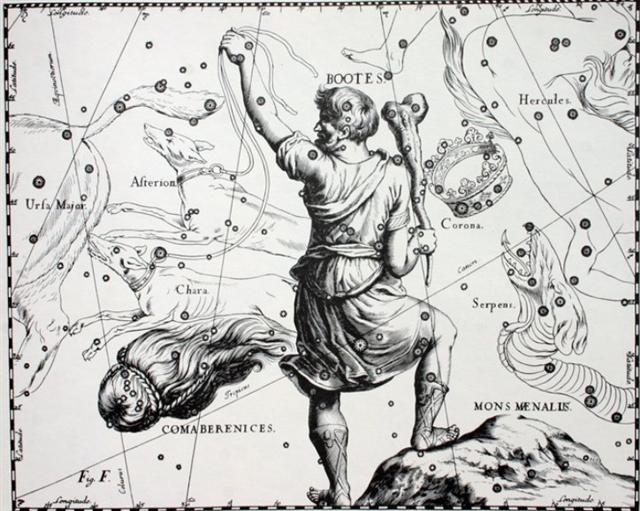 |
|
AUG 14 |
15 (227) |
16 (46 + 182) |
17 |
18 (413 - 183) |
19 |
20 |
|
INVISIBLY CLOSE TO THE SUN: |
|
FEBR 13 |
14 (45) |
15 |
16 |
17 (413) |
18 |
19 (50) |
|
April 18 |
19 (45 + 64) |
20 |
21 (111) |
22 |
23 |
24 |
|
ι Arietis (28.0), λ Arietis (28.2), υ Ceti
(28.8) |
ALRISHA (The Knot) = α Piscium,
χ Phoenicis (29.2),
ε
Trianguli (29.4),
ALAMAK
(Caracal) = γ Andromedae
(29.7)
*353.0 = *29.4 - *41.4 |
Arku-sha-rishu-ku-2 (Back
of the Head of Ku)
2h (*30.4 = *354.0 + *41.4)
κ
Arietis (30.3),
HAMAL (Sheep) =
α
Arietis
(30.5)
ALKES (α
Crateris) |
DELTOTUM = β Trianguli
(31.2), ι Trianguli (31.7), η Arietis (31.9) |
ξ¹ Ceti (32.1) |
γ,
δ
Trianguli (33.0),
χ
Persei (33.2),
10 Trianguli
(33.5),
θ
Arietis (33.3),
MIRA
(Astonishing) =
ο
Ceti
(33.7) |
No star listed (34) |
 |
In FEBRUARY 23 was TERMINALIA, the End station:
 |
 |
 |
 |
|
April 25 |
26 |
27 |
28 (118) |
|
Ba8-32 |
249 ← Ba8-33 →
264 |
Ba8-34 (328) |
Ba8-35 |
|
e ku huri hia mai - kua tu |
ki to io |
mai tae tuki te kava |
kua tuu ïa ki te iriga o te rau
hei |
|
Possibly the mysterious word ïa
was referring to the nightside - cfr Ba8-2 (huri
ïa) - in contrast to the suggestion to count (hia)
according to the days in the Gregorian solar
calendar.
Kio. 1.
Defeated; one who has taken refuge in a house or in
a cave. 2. To come out a winner, to win, to be
victorious in war, in a quarrel, in a race:
ku-kio-á te taûa i a Miru, the war was won by
the Miru; ku-kio-á te toru vaka, the third
boat won. Kiokio, to smell of smoke, to smell
smoky (of food). Vanaga. 1. Stick wherewith to rake
things into a heap. 2. Slave, servant, inferior, of
low estate, husbandsman. Hakakio, to enslave,
to reduce to subjection; tagata hakakio,
master. Mgv.: kio, a servant, slave, tiller
of the soil. 3. To discourage; also kioa.
Kiokio, foul smelling smoke. Mgv.: kio,
kiohe, to extinguish, to put out a light. 4.
Pau.: kiokio, to chirp. Mgv.: kio, id.
Ta.: ioio, to cry, said of a baby. Mq.:
kiokio, to chirp. Sa.: 'io, id. Ha.:
ioio, id. 5. Mgv.: kio, little, small,
said of birds and animals. Mq.: kio, young of
birds. 6. Mgv.: kiokio, a fish. Mq.:
kiokio, id. 7. Mq.: kio, said of women
and children who run away to the mountain shelters
in time of war. Ha.: kio, to flee, to hasten
away in fear. Churchill. Hakakio, festival of
thanksgiving. Barthel 2. |
|
VISIBLE CLOSE TO
THE FULL MOON: |
|
ASELLUS PRIMUS (1st Ass Colt) =
θ
Bootis
(217.8) |
τ
Lupi,
δ
Oct. (218.1),
φ
Virginis (218.7)
FOMALHAUT (α Piscis Austrini) |
σ
Lupi (219.1),
ρ
Bootis (219.5),
HARIS (Keeper) =
γ
Bootis
(219.7) |
σ Bootis (220.2),
η Centauri (220.4)
*179.0 = *220.4 - *41.4 |
 |
|
AUG 21 |
22 |
23 (418 - 183 =
235) |
24 (236 = 8 *
29½) |
|
INVISIBLY CLOSE TO THE SUN: |
|
FEBR 20 |
21 (116 - 64 =
52) |
22 |
TERMINALIA (*340) |
|
"March 15 |
16 (116 - 41 =
75) |
17 |
18 |
|
ξ Arietis (35.0),
ρ Ceti (35.4), 12 Trianguli (35.8), ξ² Ceti (35.9)
*359.0 = *35.4 - *41.4 |
σ Ceti (36.9) |
ν Ceti (37.9) |
ν Arietis (38.5), δ, ε Ceti (38.8) |
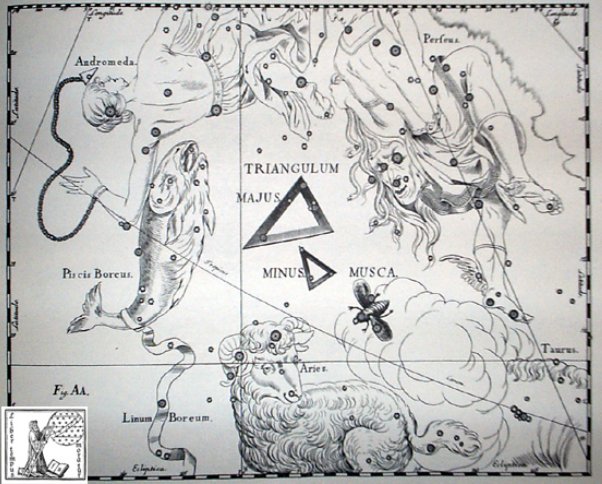 |
To balance the present situation with that at the time of
the Bull the heliacal star Bharani (*41.4) could have
been used, for at the other side of the sky was Libra with
Zuben Elgenubi (*224.2).
In "March 15 (according to the era of Bharani) the Full
Moon would have been at Asellus Primus - notably named the 'first'
although Asellus Secundus and Asellus Tertius
came earlier in the Sun calendar. The Ass Colts were
evidently counting down time to the culmination (at 21h) of the Mouth
of the Fish (Fomalhaut).
... Allen has documented all his star
culminations at 21h, which could be due to an effort of
keeping the culminations at their proper places according to
the ancients, 24h (spring equinox) - 21h = 3h = 24h / 8 =
45º. 3h corresponds to 366 / 8 = 45.75 of my right ascension
days and *366 - *46 = *320 (Dramasa, σ
Octantis) ...
The number of glyphs in line Ba8 also 'happens to be' 46.
 |
 |
 |
 |
|
April 29 (237 -
118) |
30 (120 = 360 /
3) |
Beltane |
May 2 (366 / 3) |
|
Ba8-36 →
288 |
Ba8-37 |
Ba8-38 |
Ba8-39 (333) |
|
ki ruga o te ragi o te hetu |
eko te tagata rima oho |
mai tae atu i te tagata vero i te
puoko |
kua ka ko te
Raa |
|
Ka. Particle of the
affirmative imperative, of cardinal numerals, of
independent ordinal numerals, and of emphatic
exclamation, e.g. ka-maitaki! how nice!
Vanaga. Ká. 1. To light a fire in order to
cook in the earth oven (see umu): he-ká i te umu,
he-ká i te kai. 2. Figuratively: to fire up the
soul. To put oneself in a fury (with manava):
ku-ká-á toona manava he has become furious.
Vanaga. 1. Of T. 2. Imperative sign; ka oho,
ka tere, ka ea, begone!; ka ko iha,
a greeting T; ka mou, hush; ka oho,
goodbye. 3. Infinitive sign; mea meitaki ka rava,
a thing good to take; ka harai kia mea, to
accompany. 4. A prefix which forms ordinals from
cardinals. 5. The dawning of the day. 6. Different
(? ke). Churchill.
Raa.
Sun; day; i te raá nei, today;
raá îka, good day for fishing. Vanaga. 1. Sun.
2. Day. 3. Time. 4. Name of sub-tribe. Fischer.
Te manu i te raá
= comet. Barthel.
'... The substitution of the sun for the sail, both
of which are called ra or raa in
Polynesia, is a remarkable feature in Easter Island
art ... ' Heyerdahl 3. 1. The sun;
raa ea mai,
raa puneki,
sunrise; raa tini,
raa toa,
noon. P Mgv., Ta.:
ra, the sun. Mq.:
a, id. 2.
Day, date; a raa nei
a, to-day, now;
raa i mua,
day before. P Mgv., Ta.:
ra, a
day. Mq.: a,
id. Churchill. '... The chief
thus makes his appearance at Lakeba from the
sea, as a stranger to the land. Disembarking at the
capital village of Tubou, he is led first to
the chiefly house (vale levu) and next day to
the central ceremonial ground (raaraa) of the
island ...' (Islands of History)
Ta.: toraaraa,
to raise up. Churchill 2. |
|
VISIBLE CLOSE TO
THE FULL MOON: |
|
ρ Lupi (221.0),
TOLIMAN =
α Centauri
(221.2), π Bootis (221.8), ζ Bootis (221.9)
(*180) |
31 Bootis
(222.0),
YANG MUN (South Gate) =
α
Lupi
(222.1),
RIJL AL AWWA (Foot of the Barker) =
μ
Virginis
(222.5),
ο
Bootis (222.9) |
IZAR (Girdle) =
ε
Bootis
(223.0),
109 Virginis,
α
Apodis (223.3),
μ
Librae (223.8) |
Al Zubānā-14a (Claws)
/
Visakha-16 (Forked)
/
Root-3 (Badger)
ZUBEN ELGENUBI (Southern Claw) =
α
Librae
(224.2),
ξ
Bootis,
ο
Lupi (224.5) |
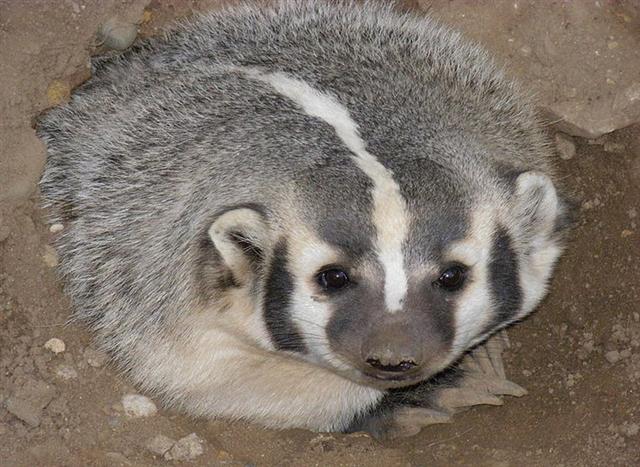 |
|
AUG 25 (237) |
26 (120 + 118) |
239 = 223 - 64 +
80 |
224 + 16 = 240 |
|
INVISIBLY CLOSE
TO THE SUN: |
|
FEBR 24 |
25 |
26 (57) |
27 |
|
μ
Arietis (39.4), HEAD OF THE FLY = 35 Arietis
(39.6),
KAFFALJIDHMA (Part of a Hand) =
γ
Ceti,
θ
Persei (39.8)
*363.0
= *39.4 - *41.4 |
π
Ceti,
ο
Arietis (40.0),
ANGETENAR (Bend in the River) =
τ¹
Eridani,
μ Ceti (40.2),
RIGHT WING = 39 Arietis
(40.9) |
Bharani-2 (Yoni) /
Stomach-17 (Pheasant)
π
Arietis (41.2),
MIRAM (Next to the Pleiades) =
η
Persei
(41.3),
BHARANI = 41 Arietis (41.4),
τ²
Eridani,
σ
Arietis (41.7)
*365.0 = 0h |
TA LING
(Great Mound) = τ Persei (42.4)
*1.0 = *42.4 - *41.4 |
 |
In the intermediate period between the present and the era of
the Golden Age of the Bull the star at the north pole had
been Kochab (the Star), which conveniently was
visible close to the Full Moon in the night after Zuben
Elgenubi:
 |
 |
 |
 |
 |
 |
 |
|
Ba8-40 |
Ba8-41 |
Ba8-42 (336) |
Ba8-43 |
Ba8-44 |
Ba8-45 |
Ba8-46 |
| kua haga i
tona mea ke |
mai tae hua
ia |
kua rere ko
te manu |
ki te tagata
- tanu ki te tau
moko |
e manu pure
ïa |
ki tona
henua |
kua vero hia
ïa mai |
|
Tanu. To
cover something in the ground with stones or soil; to bury a corpse;
tanu kopú, to bury completely; this expression is mostly used
figuratively: ka-tanu kopú te vânaga tuai era, ina ekó mana'u
hakaou, forget those old stories, don't think of them again.
Vanaga. To bury, to plant, to sow seed, to inter, to implant, to
conceal; tagata tanukai, farmer; tanuaga, burial;
tanuaga papaku, funeral; tanuga, plantation; tanuhaga,
funeral, tomb. P Pau.: tanu, to cultivate. Mgv.: tanu,
to plant, to bury. Mq.: tanu, to plant, to sow. Ta.: tanu,
to plant, to sow, to bury. Churchill.
... A une certaine saison, on
amassait des vivres, on faisait fête On emmaillotait un corail,
pierre de défunt lezard, on l'enterrait, tanu. Cette
cérémonie était un point de départ pour beacoup d'affaires,
notamment de vacances pour le chant des tablettes ou de la priére,
tanu i te tau moko o tana
pure, enterrer la pierre sépulcrale de lézard de sa prière
... |
|
VISIBLE CLOSE TO THE FULL MOON: |
|
KOCHAB (Kakkab) = β Ursae
Min.(225.0),
ξ Librae (225.7) |
KE KWAN (Cavalry Officer) =
β
Lupi
(226.3),
KE KWAN =
κ
Centauri (226.4), ZUBEN ELAKRIBI (Claw of the Scorpion) =
δ
Librae
(226.8),
π¹
Oct.
(226.9) |
ω
Bootis (227.2),
NEKKAR (Herdsman) =
β
Bootis
(227.3),
σ
Librae (227.5),
π²
Oct.
(227.7),
NADLAT (Mean Little Ones) = ψ Bootis
(227.8), π Lupi (227.9) |
15h (228.3)
ZUBEN HAKRABIM = ν Librae
(228.3), λ Lupi (228.9) |
ω
Oct. (229.3),
ι
Librae (229.6),
κ
Lupi (229.7),
ζ
Lupi (229.8) |
Al Zubānā-14b (Claws)
χ
Bootis (230.3),
PRINCEPS =
δ
Bootis
(230.6),
ZUBEN ELSCHEMALI (Northern Claw) =
β
Librae
(230.8) |
μ
Lupi,
γ
Tr. Austr.
(231.3),
ο Librae (231.8) |
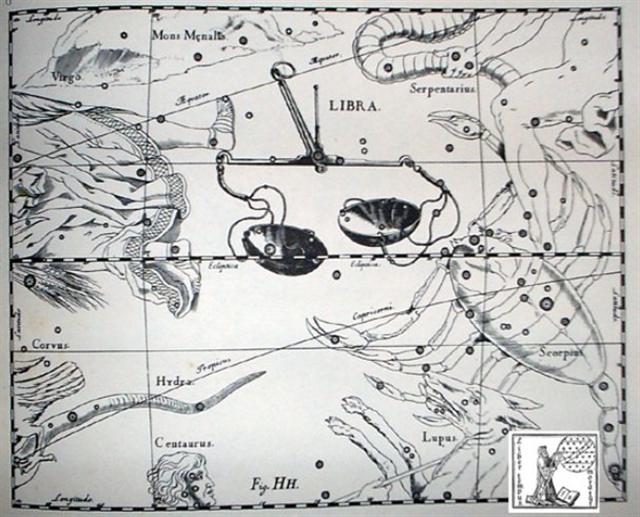 |
|
AUG 29 |
30 (242) |
31 |
SEPT 1 |
2 |
3 |
4 |
|
INVISIBLY CLOSE TO THE SUN: |
|
FEBR 28 (59) |
MARCH 1 |
2 |
3 |
4 |
5 |
6 |
|
May 3 |
4 |
(125 = 61 + 64) |
6 |
7 |
8 |
9 |
|
ρ
Arietis (43.0),
GORGONEA
SECUNDA = π
Persei
(43.5),
ACAMAR
(End of the River) =
θ
Eridani
(43.6),
ε
Arietis (43.7),
λ
Ceti (43.9)
DENEBOLA
(β Leonis) |
MENKAR (The Nose) =
α
Ceti
(44.7)
|
3h (45.7)
GORGONEA TERTIA =
ρ
Persei
(45.1),
ALGOL (The Demon) =
β
Persei
(45.9) |
ι
Persei (46.1),
MISAM (Next to the Pleiades) =
κ
Persei
(46.2),
GORGONEA QUARTA =
ω
Persei
(46.7),
BOTEIN (Pair of Bellies) =
δ
Arietis
(46.9) |
ζ
Arietis (47.7) |
ZIBAL (Young Ostriches) =
ζ
Eridani (48.0),
κ
Ceti (48.9) |
τ
Arietis (49.7) |
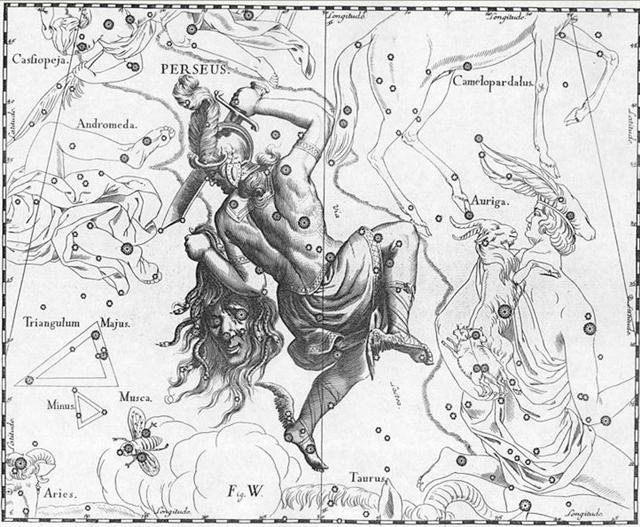 |
|












































